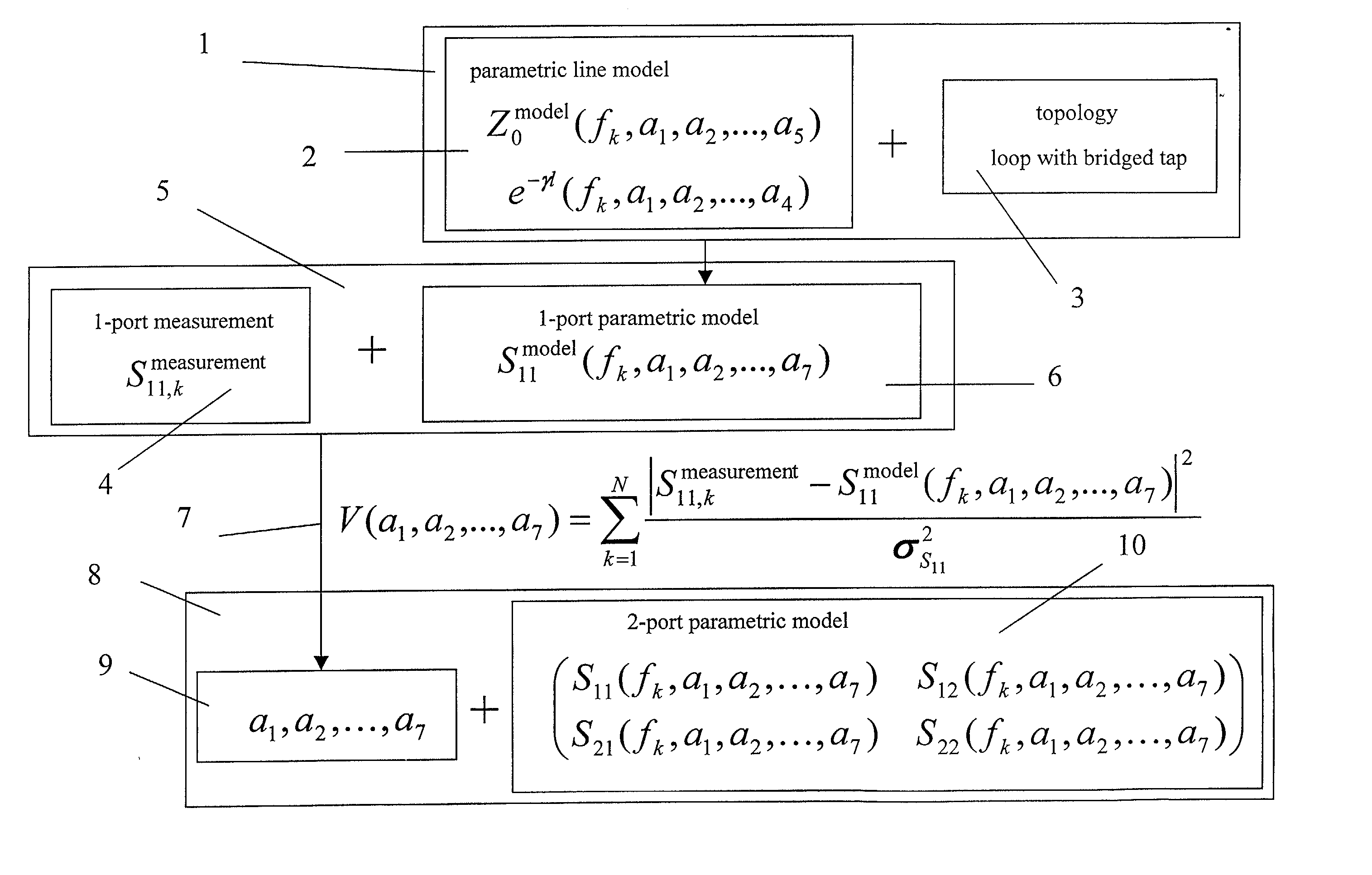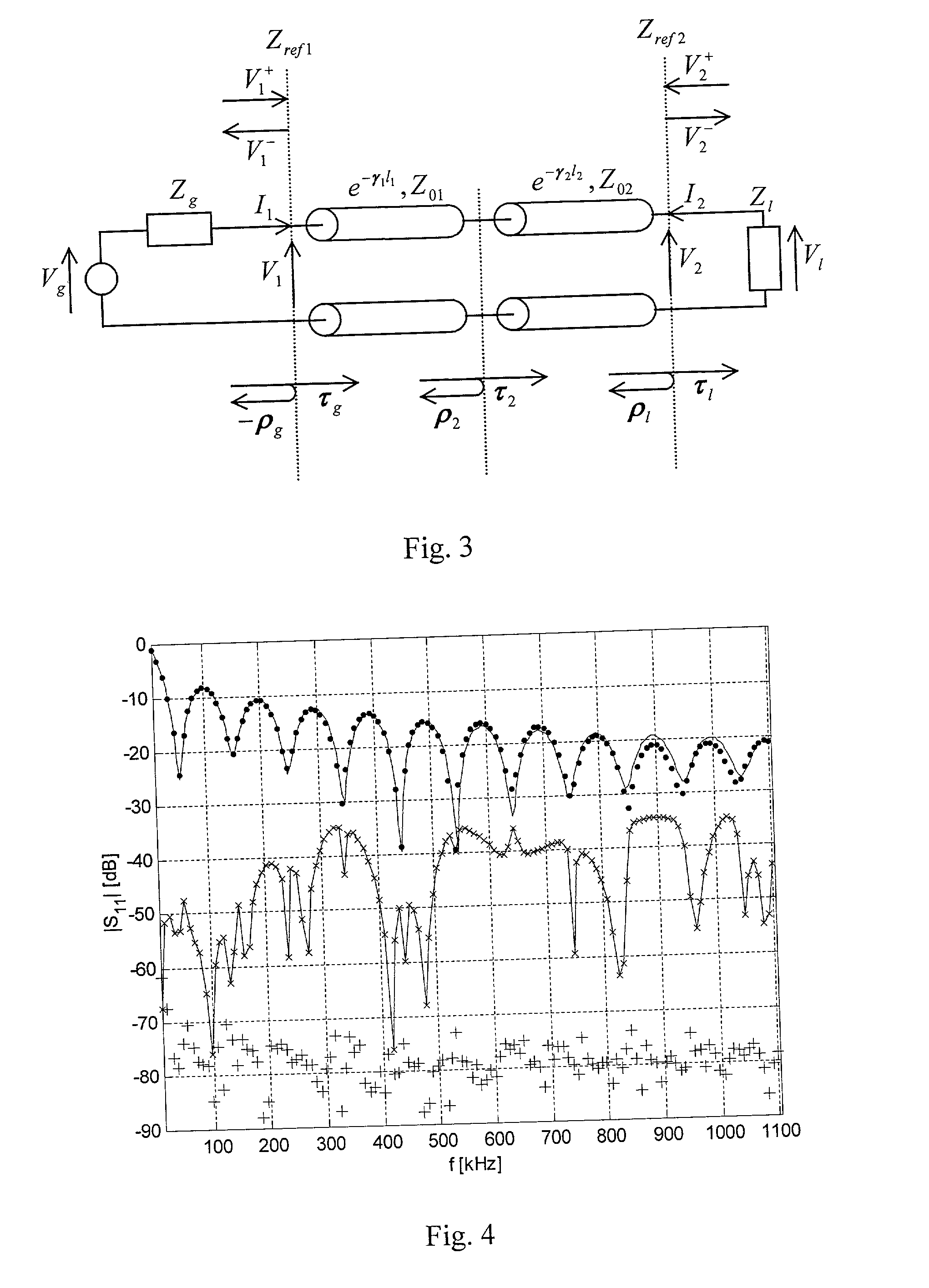Method and apparatus for identification of an access network by means of 1-port measurements
- Summary
- Abstract
- Description
- Claims
- Application Information
AI Technical Summary
Problems solved by technology
Method used
Image
Examples
Embodiment Construction
[0108] The present invention will be described with reference to certain embodiments and drawings but the present invention is not limited thereto but only by the claims. In the following embodiments of the present invention will be described by a parametric model detailed for a limited number of network topologies but this does not limit the applicability of the invention. The skilled person will appreciate that the present invention may be extended to other topologies and to other materials once the principles of the present invention have been understood. All such additional topologies are included within the scope of the present invention. Also in the description a twisted pair transmission line model is given. However the invention is not limited to this model and is not limited to twisted pair cables as transmission lines. The application of the present invention is not limited in this respect and it can be used for symmetric or asymmetric lines, for example in the case of coa...
PUM
 Login to View More
Login to View More Abstract
Description
Claims
Application Information
 Login to View More
Login to View More - R&D
- Intellectual Property
- Life Sciences
- Materials
- Tech Scout
- Unparalleled Data Quality
- Higher Quality Content
- 60% Fewer Hallucinations
Browse by: Latest US Patents, China's latest patents, Technical Efficacy Thesaurus, Application Domain, Technology Topic, Popular Technical Reports.
© 2025 PatSnap. All rights reserved.Legal|Privacy policy|Modern Slavery Act Transparency Statement|Sitemap|About US| Contact US: help@patsnap.com



